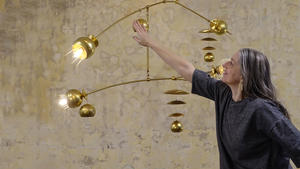This is the fourth in a series of columns from Maury Riad, the founder and CEO of Fuigo.
Working in the interior design industry for as long as I have—first at Fortuny and now at Fuigo—I’ve come into contact with hundreds of design firms large and small, new and old. It’s easy to tell when a firm doesn’t run well, but what’s more valuable for industry executives is discovering how firms become profitable. What are these companies doing right? I’ll let you in on their secrets—they’re not as obscure as you might think.
establish Operational Excellence
The big difference that I’ve noticed between a designer who is just starting out and a more established studio lies in their operational procedures. It may sound obvious, but a major key to any design firm’s success is business practices that are organized, efficient and thorough. Where working with a new designer may require a lot of back and forth about a handful of purchase orders or invoices, an established, profitable firm can juggle thousands of these processes at any given time.
Size is not necessarily a factor here. Think of the late Mario Buatta, whose plush and decadent rooms must have involved hundreds of different purchase orders for the fabric alone. What’s legendary about Buatta is that he was a one-man show (he didn’t even use computer systems), but he executed his designs at the highest level. In fact, the fewer people you have working on the back end of these operational procedures, the more profitable your firm will be.
Operational excellence involves many factors—from managing staff timelines and client billing to creating impeccable language around contracts and agreements—but all of them are important. Whether you’re sticking to paper like Buatta or using computer software like Fuigo’s project management system, the more streamlined your processes are, the better.
LeveragE Vendor Relationships
Profitable designers know how to leverage their vendors as extensions of their teams to get their work done. Any given design firm works with a wide range of vendors—whether they provide fabric, furniture or flooring—and knowing what their vendors can do for them is crucial to their success.
It’s easy to see why: A pained, laborious relationship with a vendor is not only a waste of time, it’s also a waste of money. A good designer knows how to get what they want from their vendors at a fair price—and the smartest designers even have them do the heavy lifting of sourcing and specifications. Part of this involves establishing a solid relationship with a vendor by maintaining professionalism and goodwill; the other part involves keeping the lines of communication open throughout projects. On Fuigo Market, for example, designers can engage with vendors and trade spaces in real time while making purchase orders. Not only does this type of communication maximize efficiency, but it also ensures that vendors and designers are on the same page at all times.
Create Opportunities for Elevated Design
What would a design firm be without good design? The whole impetus behind hiring an interior designer—besides having someone else do the legwork for you—is the idea that they can find the decor that clients can’t achieve themselves. This ties back into maintaining good relationships with your vendors; finding the perfect handwoven fabric or specialty Venetian mural doesn’t happen out of nowhere, but involves knowing who to go to and what to ask for. The right pieces or components elevate your design above the ubiquitous DIY aesthetic that is so popular today—and are the reason your clients will seek you out.
At the core of your business, a great design sensibility is also what will help you get word-of-mouth referrals, which are undoubtedly one of the most important ways that design firms garner new clients. Each time you start a new project, execute it professionally and bring your unique vision to the table, and you’ll be well on your way to becoming as profitable as you could hope.
____________
 Maury Riad is the founder and CEO of Fuigo, a co-working space for designers in New York and project management software. He is also the co-owner of renowned international textiles brand Fortuny, which his family has owned for nearly three decades. In his column for BOH, Riad shares his deep insight into the business of design and how designers work today to weigh in on how, with small changes to their business model, design professionals can revolutionize the industry.
Maury Riad is the founder and CEO of Fuigo, a co-working space for designers in New York and project management software. He is also the co-owner of renowned international textiles brand Fortuny, which his family has owned for nearly three decades. In his column for BOH, Riad shares his deep insight into the business of design and how designers work today to weigh in on how, with small changes to their business model, design professionals can revolutionize the industry.
Homepage photo: Shutterstock.com




























